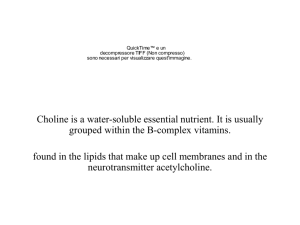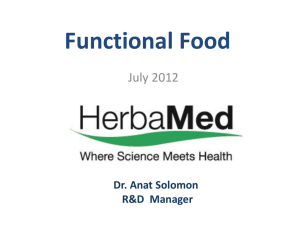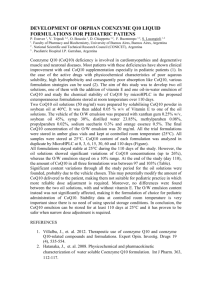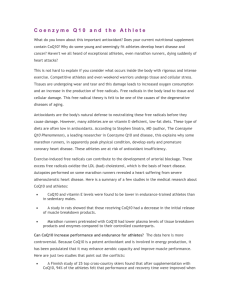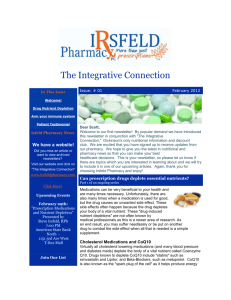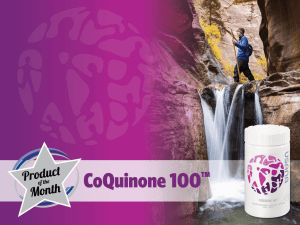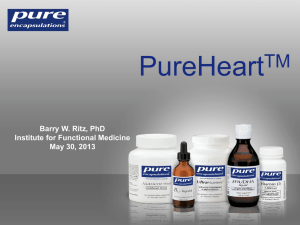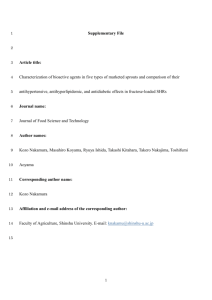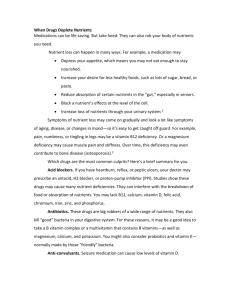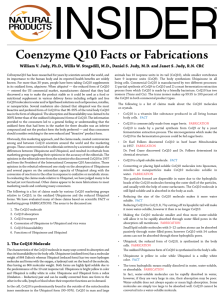Selection on Coenzyme Q10 from my book manuscript on non
advertisement
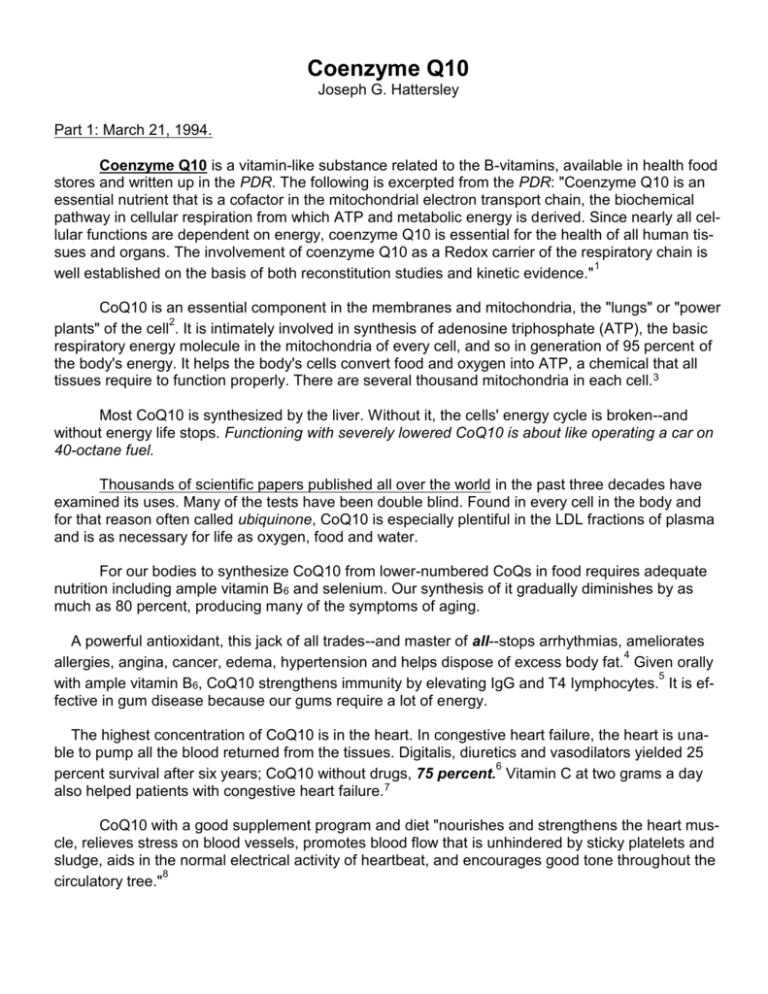
Coenzyme Q10 Joseph G. Hattersley Part 1: March 21, 1994. Coenzyme Q10 is a vitamin-like substance related to the B-vitamins, available in health food stores and written up in the PDR. The following is excerpted from the PDR: "Coenzyme Q10 is an essential nutrient that is a cofactor in the mitochondrial electron transport chain, the biochemical pathway in cellular respiration from which ATP and metabolic energy is derived. Since nearly all cellular functions are dependent on energy, coenzyme Q10 is essential for the health of all human tissues and organs. The involvement of coenzyme Q10 as a Redox carrier of the respiratory chain is 1 well established on the basis of both reconstitution studies and kinetic evidence." CoQ10 is an essential component in the membranes and mitochondria, the "lungs" or "power 2 plants" of the cell . It is intimately involved in synthesis of adenosine triphosphate (ATP), the basic respiratory energy molecule in the mitochondria of every cell, and so in generation of 95 percent of the body's energy. It helps the body's cells convert food and oxygen into ATP, a chemical that all tissues require to function properly. There are several thousand mitochondria in each cell. 3 Most CoQ10 is synthesized by the liver. Without it, the cells' energy cycle is broken--and without energy life stops. Functioning with severely lowered CoQ10 is about like operating a car on 40-octane fuel. Thousands of scientific papers published all over the world in the past three decades have examined its uses. Many of the tests have been double blind. Found in every cell in the body and for that reason often called ubiquinone, CoQ10 is especially plentiful in the LDL fractions of plasma and is as necessary for life as oxygen, food and water. For our bodies to synthesize CoQ10 from lower-numbered CoQs in food requires adequate nutrition including ample vitamin B6 and selenium. Our synthesis of it gradually diminishes by as much as 80 percent, producing many of the symptoms of aging. A powerful antioxidant, this jack of all trades--and master of all--stops arrhythmias, ameliorates 4 allergies, angina, cancer, edema, hypertension and helps dispose of excess body fat. Given orally 5 with ample vitamin B6, CoQ10 strengthens immunity by elevating IgG and T4 lymphocytes. It is effective in gum disease because our gums require a lot of energy. The highest concentration of CoQ10 is in the heart. In congestive heart failure, the heart is unable to pump all the blood returned from the tissues. Digitalis, diuretics and vasodilators yielded 25 6 percent survival after six years; CoQ10 without drugs, 75 percent. Vitamin C at two grams a day also helped patients with congestive heart failure.7 CoQ10 with a good supplement program and diet "nourishes and strengthens the heart muscle, relieves stress on blood vessels, promotes blood flow that is unhindered by sticky platelets and sludge, aids in the normal electrical activity of heartbeat, and encourages good tone throughout the 8 circulatory tree." 2 CoQ10 “recharges” vitamin E (which is best used as natural d-alpha tocopherol with mixed tocopherols). It does this by absorbing free radicals picked up by the vitamin.9 In cardiomyopathy (weak heart muscles), levels of CoQ10 are almost always drastically deficient. When it is given, the recovery of heart function can be dramatic. So in Japan, Sweden, Italy, Denmark and Canada CoQ10 is a conventional and widely prescribed heart medication. In the U.S. it has been seriously used long-term in Indiana and Florida, but particularly in the Langsjoen Clinic in Tyler, Texas: father and son physicians. They use CoQ10 along with the usual anticoagulant and blood pressure medications; using CoQ10 the conventional medications can frequently be reduced. Per Langsjoen adds, "CoQ10 is so basic that all health problems we do not understand should be re-evaluated." The Langsjoens think it will ultimately be used for a host of disorders and expect it to become lifetime therapy for many people. Karl Folkers, who pioneered early research on CoQ10 as well as vitamin B6, considers it "nothing less than a potential medical breakthrough." He says, "If you don't have enough, you're sick; without it you're dead." Seizure of CoQ10 by Texas health authorities at the behest of the FDA (following orders of the medical/drug cartel) was a sentence of slow death for many of their patients. Many bought five 10 years' supply and said they'd gladly travel to Canada to buy it. Many owe their lives to CoQ10. _____________________________________________________________________________ SIDEBAR: On Standards of Care in Congestive Heart Failure. "The “standard of care” is now a combination of digoxin, furosemide and an angiotensin-converting enzyme (ACE) inhibitor. Failure to follow the standards of care is liable to get a doctor in trouble. "Yet advances can never take place unless someone has the courage to try new things. In effect, the standard of acceptable care is determined not by reason, but by who has the power to create the standards. And those who have the power are not necessarily the best informed. Some are recognized as authorities only because they have published numerous papers, most of which were funded by drug money or by other special interest groups. It is no accident that the opinions of such doctors are consistent with the corporate goals of the companies funding the research. This potential conflict of interest renders the opinions of these 'authorities' suspect. [Recall Dr. David G. 11 Williams' "Golden Rule": He who has the gold makes the rules." ] "A more sensible standard of care for cardiac patients would include giving Mg, CoQ10, Se, vitamins E, C, B6 and folic acid. Doctors would then be more likely to get in trouble for not adminis12 tering these nutrients than for giving them to their patients." _______________________________________________________________ Thirty million take CoQ10 worldwide including 12 million (over 10 percent of the population) in Japan, where it requires a prescription (which FDA wants here). They usually take 100-300 mg/day for high blood pressure and cardiovascular protection. For general prophylactic use (i.e. to promote excellent health), start with 10 mg daily (or 30 mg every third day, since it is slow-acting) and gradually increase the amount; this way, side effects are unknown. Part 2. The remainder of this document was published in Journal of Orthomolecular Medicine 1996;11;2:111-112.) 3 13 Thomas Newman and Stephen Hulley proposed (JAMA 1996;Jan. 3) that since fibrate and statin cholesterol-lowering drugs cause cancer in rodents, they might cause unexplained cancers in patients when taken for a long time; and that their use for patients not at high cardiac risk could therefore be unwise. Meta-analysis of randomized clinical trials suggests that lipid-lowering drugs 14 likely increases non-cardiovascular mortality, lending plausibility to the Newman/Hulley proposal. In reply, I (1) Offer a mechanism to explain how at least statin drugs may cause cancer, and (2) Propose inferences for future protection and therapy against cancer and much more. synthesis would therefore be expected to elevate risk of conditions against which CoQ10 protects. 15 Over the past 25 years, the vitamin-like substance Co-enzyme Q10--synthesized in the liver 16 and other cells from lower-number CoQs ingested in many foods --has been reported to be effective at reducing various cancers and metastases, even in patients for whom all conventional treat17 18 ments had failed. Some of these patients were alive and well 5 to 15 years later without any trace of cancers. AIDS patients showed a “striking” response to therapy with CoQ10; the HIV virus 19 appears to induce a deficiency of CoQ10. 20 And “CoQ10 has no established side effect at any dose level.” (Several recent tests used 390 milligrams/day; it is important to increase gradually from a smaller starting quantity.) 21 Lovastatin lowered CoQ10 in laboratory rats --likely explaining cancer in the statin drug tests cited by Newman and Hulley1. In patients on CoQ10, starting concurrent Lovastatin lowered CoQ10 by 44% to 75% (this finding was confirmed in Italy by G.P. Littarru). 22 The condition of every patient worsened. One required open-heart surgery. Another was referred for a heart transplant; her life was saved by CoQ10 at 200 mg/day5--confirming CoQ10's efficacy against certain cardiac conditions. CoQ10 is as essential for survival and health as oxygen, food and water; present in every 23 body cell, it is often called ubiquinone. Serum levels decline rapidly with age, producing many of the symptoms of aging; a deficiency of 25% is associated with illness, a deficit of 75% with death in animals.4 It is widely prescribed in Canada and Denmark, among others; and in Japan 12 percent of the population take physician-prescribed CoQ10 at 100-300 mg/day for high blood pressure and cardiac conditions5. But it is largely ignored by medical doctors in the United States: still available over the counter, it is not effectively promoted and so not highly profitable for anyone. This is an instance of therapy favoring the medical industry’s, rather than the patient’s best interest. CoQ10's possible mechanisms against cancer. 26 27 and protects against free radical damage. 24 (1) In its reduced form it is an antioxidant 25 (2) It is intimately involved in synthesis of adenosine triphosphate (ATP), the basic energy molecule of every cell--and thus in generation of 95 percent of the body’s energy. Karl Folkers and Cyril Bowers demonstrated in a series of papers in Journal of Medicine in the 1970s that oral CoQ10 administered to diabetic patients boosts their bio-energetics. ‘The role of CoQ10 in bioenergetics is far more important for health and survival than its antioxidant acvitity.’ 10 4 (3) CoQ10 is a non-specific stimulant of the host defense system. Blood levels of Tlymphocytes increased when it was given with pyridoxine (vitamin B6) or alone; the ratio of T4/T8 28 lymphocytes also improved with or without B6. Contrast the energy loss and immune system weakening caused by conventional cancer therapies. It is widely accepted that if a large intake of a nutrient cures a disease, a moderate regular intake of the same nutrient may prevent that disease. From the above evidence and reasoning it follows that (1) Statin drugs could cause cancer in humans when used for decades, by lowering body Coenzyme Q10; (2) Intake of CoQ10 at, say, 50-100 mg/day could protect millions against at least certain cardiac conditions and cancers. For best results, the supplement needs to be accompanied by substantial quantities of the other members of the antioxidant team, by a rounded, well above RDA program of nutrient supplements made from food, and a diet including moderate quantities of baked or boiled red meat and heavy in fresh raw or lightly steamed vegetables. [In 1997, I learned of a superior alternative to that: Juice-Plus.] (3) High-dose CoQ10 may defeat many cancers and their metastases without adverse side effects. In humans as well as rats. Update, year 2000. The adult human body requires CoQ10 at 500 milligrams a day. The body synthesizes it from a healthful diet, but makes less and less with age. To keep body quantity where it should be, supplementation needs to rise with age.29 30 31 At age 79, I take 400 milligrams daily in a chewable tablet that includes lecithin and a little vitamin E to promote absorption of this watersoluble nutrient.32 But caution: In a patient with alkalinized stomach from overuse of antacids, ubiquinone (another name for CoQ10) enhances growth of Candida albicans, 33 which can develop after long courses of antibiotic drugs. Joseph G. Hattersley 7031 Glen Terra Court S.E. Olympia, WA 98503-7119 (360) 491-1164 josephhattersley@gateway.net www.angelfire.com/wa/jhattersley/content.html REFEERENCES: 1 Physician's Desk Reference. 2 Lee, L. Radiation Protection Manual, 3rd ed, 1990. Bland JS. Funct Med Update 2000;Feb. 4 Bliznakov EG, Hunt ER The Miracle Nutrient: Coenzyme Q10, New York: Bantam,(1988, 5 Folkers K et al. The activities of Coenzyme Q10 and vitamin B6 for immune response, Biochem. Biophys. Research Comm. 1993;193:88-92. 6 Langsjoen PH. et al. Long-term effectiveness and safety of coenzyme Q10 therapy for idiopathic dilated cardiomyopathy, Am. J. Cardiol. 1990;65:521-523. 7 Drexler H. Congestive heart failure, endothelial function and vitamin C. Circulation 1998;97:363-368. 8 West B. Health Alert 1994;Jan. 9 Williams DG. Alternatives for the Health Conscious Individual Special supplement. 1999;Feb. 10 Fitzjarrell E Coenzyme Q10 seized in Texas, Townsend Ltr for Doctors 1992;Dec. 1100-1102, from Texas Monthly. 11 Williams DG. Alternatives 1993;March 3 5 12 Gaby AR., Editorial: Who determines standards of care?, TLfD 1992;Feb./Mar.:177 . 13 Newman TB, Hulley SB. Carcinogenicity of lipid-lowering drugs. JAMA 1996 (Jan 3);275:55- 60. Muldoon MF, Manuck SB, Matthews KA. Lowering cholesterol concentrations and mortality: A quantitative review of primary prevention trials. BMJ 1990;301:309-314. 15 Hattersley JG. Lowering cholesterol with Lovastatin: The wrong approach. A survey of usually overlooked literature. J Orthomolecular Med 1994;9(1):54-57. 16 Bliznakov G, Hunt GL. The Miracle Nutrient. Co-enzyme Q10. NY: Bantam, 1988. 17 Lockwood K, Moesgaard S, Folkers K. Partial and complete regression of breast cancer in patients in relation to dosage of coenzyme Q10. Biochem Biophys Res Commun (US). 1995(Mar 30); 199(34):1504-1508. 14 18 Folkers K, Brown R, Judy WV, Morita M. Survival of cancer patients on therapy with coenzyme Q10. Biochem Biophys Res Commun (US) 1993 (Apr 15);192(1):241-245. 19 Folkers K, Langsjoen P, Nara Y et al. Biochem Biophys Res Commun 1988;153(2):888-896. 20 Folkers K. Personal communication, 1991. 21 Willis RA, Folkers K, Tucker IL, Ye C-Q et al. Lovastatin decreases coenzyme Q levels in rats. Proc Nat Acad Sci USA 1990;87:8926-8930. 22 Folkers K. et al. Lovastatin decreases coenzyme Q levels in humans, Proc. Nat. Acad. Sci. U.S.A. 1990;87:8931-8934. 23 Arky R, Ed. Physician’s Desk Reference, 48th ed. Montvale, NJ: Medical Economics Data, 1994. 24 Folkers K, Hanioka T, Williams M et al. The relevance of a deficiency of coenzyme Q10 to cancer. Med Chem Res 1993;Feb. 25 Biochemica et Biophysica Acta 1993. 26 Schulz JB, Henshaw DR, Matthews RT, Beal MF. Coenzyme Q10 and a free radical spin trap protect against MPTP neurotoxicity. Exp Neurol (US) 1995 (Apr);132(2):279-283. 27 Beyer RE. An analysis of the role of coenzyme Q10 in free radicals generation and as an antioxidant. Biochem Cell Biol (Canada) 1992 (June):70(6):390-403 (177 ref). 28 Bliznakov EG. Immunological senescence in mice and its reversal by coenzyme Q10. Mech Ageing Dev (Switz) 1978 (Mar);7(3):189-197 .29 Ely JTA and Krone CA. A brief update on Ubiquinone. Jour Orthomolecular Med 2000;15;2:63-68. 30 Ernstner L, Dallner G. Biochemical, physiological and medical aspects of ubiquinone function. Biochim Biophys Acta 1995;1271:195-204. 31 Langsjoen PH, Langsjoen AM. Overview of the use of CoQ10 in cardiovascular disease. Biofactors 1999;9:273-284. Available at www.csi.unian.it/coenzymeQQ/article,html. 32 Weiss M, Mortensen SA, Rasssig MR et al. Bioavailability of four oral coenzyme Q10 formulations in healthy volunteers. Molec Aspects Med 1994;15:273-280. 33 Krone CA, Elmer GW, Ely JTA, Fudenberg HH, Thoreson J. Effect of coenzyme Q10 on the growth of Candida albicans in vitro. Mycopathologia, in submission in 2000.
